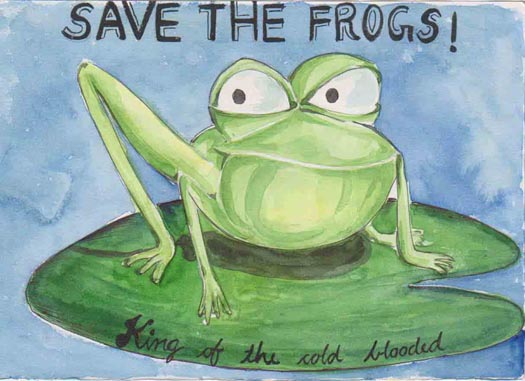


Kerry Kriger: Our mission is to prevent an imminent mass extinction of amphibians that is already well underway. The painted burrowing frog Neobatrachus pictus from Autralia. What is the organization’s mission? What led you to start the organization? “I think this says a lot about the extent and the severity of the environmental damage that humans have caused in recent times, and of the urgency with which we need to act in order to save the frogs, and save ourselves.” Yet in the last half-century we have driven thousands of species to the verge of extinction,” Kriger says. “Frogs have successfully adapted to numerous environmental disturbances over the past 250 million years of their existence. Decades of environmental progress can be destroyed by a bad politician in a single term.”ĭespite the daunting nature of the amphibian crisis and the fact that society is largely unaware of the issue, Kriger believes that “if everyone steps up, gets involved and does their part, then we have a high chance of saving frogs from extinction.” This is what Save the Frogs Day is ultimately about. In addition Kriger says: “vote for the environment. Some activities include foregoing the use of pesticides, not buying bottled water, driving slower to avoid running over frogs, and eating less meat, which has led to widespread deforestation, destroying amphibian habitats worldwide. Kriger emphasizes that everyone can have a role in saving frogs-and his website’s expansive page on the topic is testament to this.

Currently, one third of all amphibians are threatened with extinction, while 200 species are likely already gone. In addition, the fungal disease chytridiomycosis has decimated wild amphibian populations globally, spread from one location to another by human traffic and trade. “Habitat destruction, pesticides, pollution, climate change, invasive species, over-harvesting for the food and pet trades, and infectious diseases that are spread by human activity are all contributing to the problem,” Kriger says. Solely devoted to saving amphibians, SAVE THE FROGS! is focused on a multi-pronged approach, including community outreach efforts (like ‘Save the Frog Day’), education, legal defense, acquiring land vital for amphibians, lobbying for environmental protections, and funding scientific research.Īmphibians are one of the most threatened groups of animals in the world. Few people knew frogs were disappearing and there was no movement to avert an impending environmental disaster,” he told. Kriger, a research biologist who has studied the amphibian plague chytridiomycosis, started SAVE THE FROGS! because “there was little to suggest that our society was on the path to saving threatened frogs or other amphibian species. In addition free lectures are occurring in Lisbon, Johannesburg, Torino, Indianapolis, and Brisbane to name a few places. In China, a researcher will speak on behalf of frogs to 3,000 students via television. In Madagascar a mining employee has scheduled a discussion with the mine’s top executives about frogs. In Nepal a scientist plans to use his radio show to spread the message about imperiled frogs. Kerry Kriger with the Red-eyed tree frog Litoria chloris from Eastern Autralia. “To the best of my knowledge that makes him the highest ranking politician in the world to formally acknowledge the amphibian extinction crisis,” Kriger comments, who will be speaking in Charlottesville, Virginia on April 28th. Just this week in Virginia, Governor Tim Kaine has officially recognized the date for his state. I thought of Save The Frogs Day one night last December when I was the only full-time SAVE THE FROGS! employee and I only had a couple part-time volunteers,” Kriger explains.
“I’m continually amazed at the positive response it’s gotten. Kerry Kriger is responsible for the first annual Save The Frogs Day on Tuesday, April 28th with events planned worldwide from the United States to Nepal, and Australia to China. Founder and director of SAVE THE FROGS!, Dr.


 0 kommentar(er)
0 kommentar(er)
